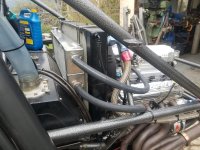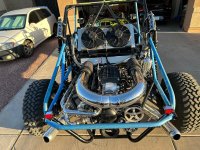Looney Duner
Well-known member
- May 9, 2021
- 607
- 505
This summer I'll be rebuilding my engine and adding a kenne bell 2.6 supercharger. I'd like to hear from the supercharger crowd, how big it your heat exchanger core? Is it just mounted in front of the radiator? Or separately with its own fans? Also curious about size vs boost, or size vs hp? I've done plenty of turbo systems, with air to air intercooler, but the water cooled stuff is new to me. So, what do you have?




